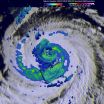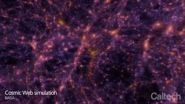(Press-News.org) A 3D-printed teddy bear can have a stiff head, a pliable tummy and bendable arms, even though all of it is made of the same relatively stiff material, using a new method developed by Disney Research.
By using the printer to alter the small-scale structure of the material, the Disney researchers showed they could vary its elasticity dramatically within the same object. They developed families of compatible microstructures with varying elastic properties, enabling designers to select the properties desired for each region of an object.
The team demonstrated their new method to produce several deformable toys, including a teddy bear and a rabbit, as well as a pair of deformable tubes that might be used as a manipulator for a soft robot.
"Many functional objects in our everyday life consist of elastic, deformable material, and the material properties are often inextricably linked to function," said Christian Schumacher, a Ph.D. computer graphics student at ETH Zurich and at Disney Research. "3D printing usually involves only a single material or a very small set of materials. However, 3D printing easily produces complex, 3D microstructures which we can use to create metamaterials with properties beyond those of standard printer materials."
Schumacher and his colleagues will present their method for controlling elasticity in 3D printed objects at ACM SIGGRAPH 2015, the International Conference on Computer Graphics and Interactive Techniques, in Los Angeles Aug. 9-13.
Metamaterials - materials that derive their bulk properties from the shape and arrangement of their microstructures, rather than the composition of the material itself - are not new. What the Disney Research team sought to do is use a variety of these metamaterials so that different regions within a single object could have different elastic properties.
They began by sampling a number of microstructures to determine their properties. These were then grouped into families of similar structures that represent a range of elastic behaviors and that can be interpolated to smoothly vary the material properties over a wide range.
To create an object, these microstructures - measuring 8 mm on a side - are tiled together in the object's interior. The researchers created an algorithm for optimizing the combination of these microstructures, making sure that microstructures of different shapes connect properly.
In the demonstration objects, the team showed that this method could be used to produce fully articulated figures, with joints that bend even through the remainder of each limb was stiff. A simple, two-fingered manipulator developed for a soft robot featured two tubes designed to bend only in one direction when a balloon inside was inflated or deflated.
INFORMATION:
In addition to Schumacher, the Disney team included Bernd Bickel and Markus Gross. Other members were Jan Rys and Chiara Daraio of ETH Zurich and Steve Marschner of Cornell University.
For more information and a video, visit the project webpage at http://www.disneyresearch.com/publication/microstructures/.
About Disney Research
Disney Research is a network of research laboratories supporting The Walt Disney Company. Its purpose is to pursue scientific and technological innovation to advance the company's broad media and entertainment efforts. Vice Presidents Jessica Hodgins and Markus Gross manage Disney Research facilities in Los Angeles, Pittsburgh, Zürich, and Boston and work closely with the Pixar and ILM research groups in the San Francisco Bay Area. Research topics include computer graphics, animation, video processing, computer vision, robotics, wireless & mobile computing, human-computer interaction, displays, behavioral economics, and machine learning.
Computer graphics researchers have developed a way to efficiently render images of sand castles, gravel roads, snowmen, salt in a shaker or even ocean spray - any object consisting of randomly oriented, but discernible grains - that look realistic whether viewed from afar or up close.
The new method, developed by Disney Research in collaboration with researchers from Karlsruhe Institute of Technology, ETH Zurich, Cornell University and Dartmouth College, employs three different types of rendering techniques depending on the scale at which the object is viewed.
A sand ...
Chicago, August 5, 2015--A new national survey conducted by The Associated Press-NORC Center for Public Affairs Research reveals a disparity among blacks' and whites' perception of violence against civilians by police. Nearly three-quarters of black respondents consider violence against civilians by police officers to be an extremely or very serious problem, compared to less than 20 percent of whites. However, the poll also finds agreement across racial groups on many of the causes of police violence, as well as further consensus that changes in policies and procedures ...
Disney Research has created LinkEdit, interactive software for predictably changing the shape or motion of planar linkages used in such objects as kinetic sculptures, folding furniture and mechanical toys.
The LinkEdit software enables users to make desired changes in a linkage, such as altering its size or shape, while preserving other features, such as the walking gait of a linkage for a mechanical leg. The researchers demonstrated this capability by making alterations to the Jansen linkage, the building block to the famous walking sculptures created by artist Theo ...
Forehead wrinkles that rapidly deepen and crow's feet that appear suddenly around the eyes might distress the average person, but the ability to quickly and realistically incorporate such details in a facial reconstruction is the key feature of a new performance capture method developed at Disney Research.
The method, which requires only a single video camera such as a webcam, is the first to both operate in real-time and to capture facial features in high resolution, including such details as wrinkles.
"This could open up a variety of new applications, from casual ...
Heavy rain, towering thunderstorms, and a large area are things that NASA satellites observed as Typhoon Soudelor moves toward Taiwan on August 5, 2015.
NASA's Terra satellite passed over Soudelor on August 5, 2015 at 01:45 UTC and the Moderate Resolution Imaging Spectroradiometer (MODIS) instrument captured a visible image of the large storm in the Philippine Sea. The eye appeared to be cloud-filled as bands of thunderstorms spiraled into the center of the storm.
The Global Precipitation Measurement (GPM) mission core observatory, a satellite managed by both NASA and ...
A team of astronomers led by Caltech has discovered a giant swirling disk of gas 10 billion light-years away--a galaxy-in-the-making that is actively being fed cool primordial gas tracing back to the Big Bang. Using the Caltech-designed and -built Cosmic Web Imager (CWI) at Palomar Observatory, the researchers were able to image the protogalaxy and found that it is connected to a filament of the intergalactic medium, the cosmic web made of diffuse gas that crisscrosses between galaxies and extends throughout the universe.
The finding provides the strongest observational ...
Washington, DC, August 5, 2015 -- Potentially harmful bacteria can survive on endoscopes used to examine the interior of the digestive tract, despite a multi-step cleaning and disinfecting process, according to a study published in the August issue of the American Journal of Infection Control, the official publication of the Association for Professionals in Infection Control and Epidemiology (APIC).
Though endoscopes were cleaned in accordance with multi-society guidelines, viable microbes and residual contamination remained on surfaces after each stage of cleaning, ...
Dan's Wild Wild Science Journal
New paper shows global climate model errors are significantly less than thought
Scientists have matched the output of climate models to the way the Earth's temperature record is constructed in a new study in Geophysical Research Letters. Dan Satterfield explores how climate models are doing an even better job at predicting the Earth's temperature than was thought.
Eos.org
On the rebound: Modeling Earth's ever-changing shape
A new modeling tool easily computes the elastic response of changes in loading on Earth's surface to high resolution. ...
While undergoing laparoscopic sleeve gastrectomy induced weight loss and improvements in obesity-related disorders, long-term followup shows significant weight regain and a decrease in remission rates of diabetes and, to a lesser extent, other obesity-related disorders over time, according to a study published online by JAMA Surgery.
Obesity was recognized as a global epidemic by the World Health Organization 15 years ago and rates of obesity have since been increasing. Obesity is currently considered a severe health hazard and a risk factor for diabetes mellitus, hypertension, ...
In a small study, women who had Roux-en-Y gastric bypass surgery reached certain blood alcohol concentrations in half the number of drinks compared to women who didn't have the surgery, and reported a greater feeling of drunkenness, according to a study published online by JAMA Surgery.
Roux-en-Y gastric bypass (RYGB) is the most common bariatric surgical procedure performed in the world. Although RYGB surgery causes a marked reduction in food intake and induces remission of food addiction, it is associated with an increased risk of developing alcohol use disorders. It ...

